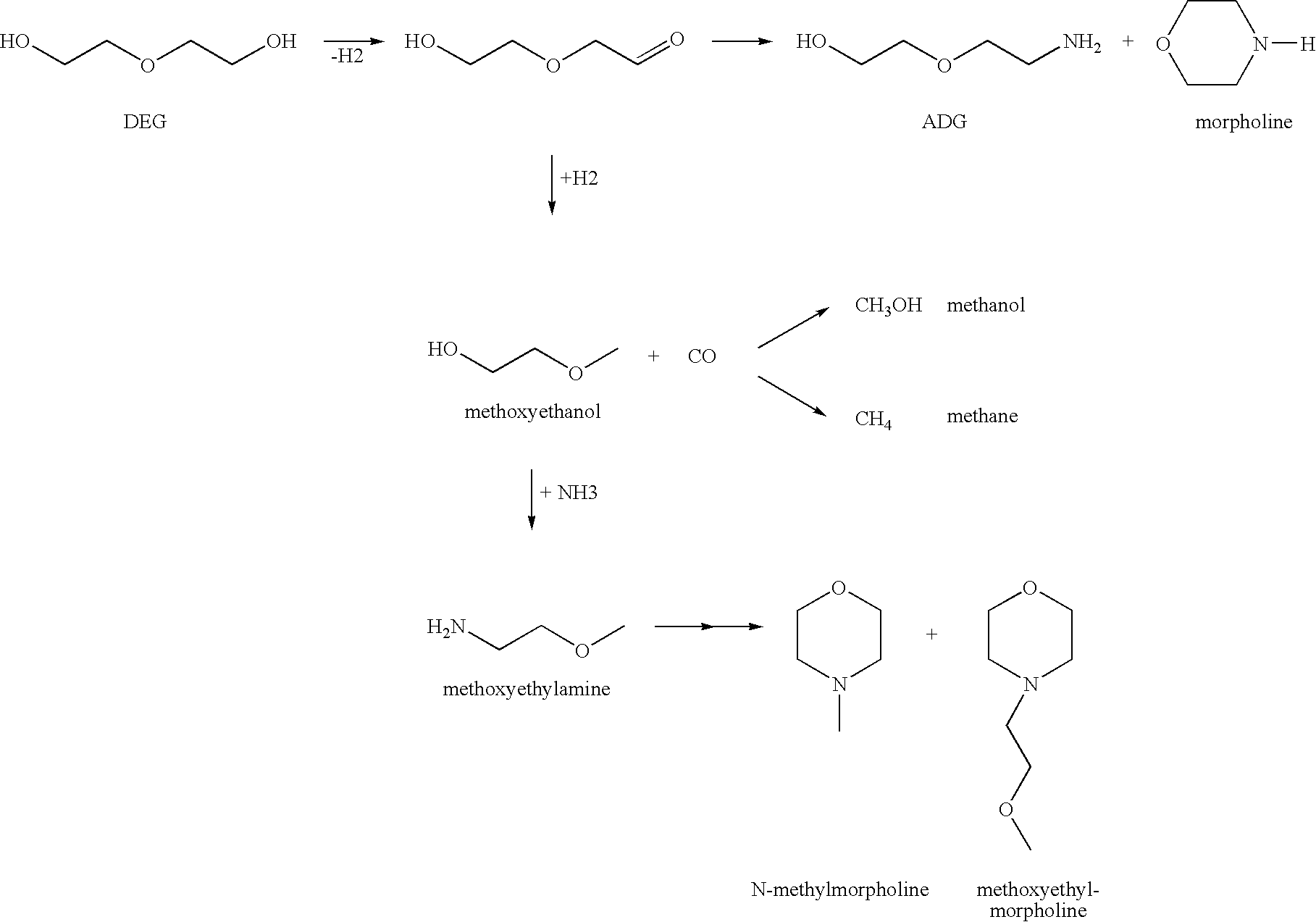Method for producing an amine
a technology of amine and amine, which is applied in the direction of organic compound/hydride/coordination complex catalyst, physical/chemical process catalyst, metal/metal-oxide/metal-hydroxide catalyst, etc., can solve the problems of specification and product quality, runaway risk, etc., and achieve high conversion, high yield, and improved economic viability of existing processes
- Summary
- Abstract
- Description
- Claims
- Application Information
AI Technical Summary
Benefits of technology
Problems solved by technology
Method used
Image
Examples
example 1
Preparation of Amination Catalyst 1 (Based on Ni—Co—Cu / ZrO2=Comparative Experiment According to EP-A-963 975)
[0197]An aqueous solution of nickel nitrate, cobalt nitrate, copper nitrate and zirconium acetate which comprised 2.39% by weight of NiO, 2.39% by weight of CoO, 0.94% by weight of CuO and 2.82% by weight of ZrO2 was precipitated simultaneously in a stirred vessel in a constant stream with a 20% aqueous sodium carbonate solution at a temperature of 70° C. in such a way that the pH, measured with a glass electrode, of 7.0 was maintained. The resulting suspension was filtered and the filtercake was washed with demineralized water until the electrical conductivity of the filtrate was approx. 20 μS. Thereafter, the filtercake was dried at a temperature of 150° C. in a drying cabinet or a spray dryer. The hydroxide-carbonate mixture obtained in this way was then heat-treated at a temperature of from 450 to 500° C. over a period of 4 hours. The catalyst thus prepared had the compos...
example 2
Comparative Catalyst
[0198]An aqueous solution of nickel nitrate, iron nitrate and zirconium acetate, which comprised 15% by weight of Ni (calculated as NiO), 1.2% by weight of Fe (calculated as Fe2O3) and 25% by weight of Zr (calculated as ZrO2), was precipitated simultaneously in a stirred vessel in a constant flow with a 20% aqueous sodium carbonate solution at a temperature of 70° C. at such a rate that the pH of 7.0 measured with a glass electrode was maintained. The resulting suspension was filtered and the filtercake was washed with demineralized water until the electrical conductivity of the filtrate was approx. 20 μS. Subsequently, the filtercake was dried at a temperature of 150° C. in a drying cabinet or a spray dryer. The dried hydroxide-carbonate mixture was subsequently heat-treated at a temperature of from 430 to 460° C. over a period of 4 hours.
[0199]The catalyst was mixed with 3% by weight of graphite and shaped to tablets. The oxidic tablets were reduced. The reduct...
example 3
[0201]The catalyst was prepared analogously to catalyst 2. However, ammonium dihydrogenphosphate was incorporated into the still-moist filtercake, so as to obtain the oxide mixture specified below. The catalyst 3 thus obtained had the composition as shown in Table I.
PUM
| Property | Measurement | Unit |
|---|---|---|
| temperature | aaaaa | aaaaa |
| absolute pressure | aaaaa | aaaaa |
| absolute pressure | aaaaa | aaaaa |
Abstract
Description
Claims
Application Information
 Login to view more
Login to view more - R&D Engineer
- R&D Manager
- IP Professional
- Industry Leading Data Capabilities
- Powerful AI technology
- Patent DNA Extraction
Browse by: Latest US Patents, China's latest patents, Technical Efficacy Thesaurus, Application Domain, Technology Topic.
© 2024 PatSnap. All rights reserved.Legal|Privacy policy|Modern Slavery Act Transparency Statement|Sitemap



